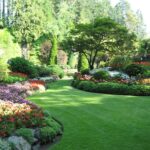In our current reality where maintainability is turning out to be more significant, eco-accommodating specialties are an extraordinary method for expressing creativity while aiding the planet. Whether you’re a carefully prepared craftsman or starting, these specialties are basic, pleasant, and valuable for the climate. How about we investigate some eco-accommodating art thoughts and the motivations behind why they matter.
What Are Eco-Accommodating Specialties?
Eco-accommodating artworks are projects produced using normal, reused, or biodegradable materials. These artworks mean to decrease squander and natural effect. By utilizing materials that are really great for the planet, you make something lovely as well as add to a more maintainable world.

Why Pick Eco-Accommodating Specialties?
- Decrease Squander: Numerous eco-accommodating artworks use materials that would some way or another end up in the waste. By reusing things, you assist with decreasing landfill squander.
- Utilize Regular Assets: Eco-accommodating specialties frequently include normal materials like paper, wood, and textures that are biodegradable, not normal for engineered materials that can require hundreds of years to deteriorate.
- Instruct Supportability: Making with eco-accommodating materials can show children and grown-ups the significance of reusing and really focusing on the climate.
- Support Nearby Economies: Numerous eco-accommodating materials are obtained from neighborhood providers. Picking these materials upholds nearby organizations and networks.
- Advance Imagination: Eco-accommodating making energizes inventive reasoning. You can make something wonderful and useful from materials that others could ignore.
Simple Eco-Accommodating Art Thoughts
Here are some basic specialty thoughts you can attempt at home. The majority of these ventures use materials you probably as of now have!
Reused Paper Mache
What You Really want:
- Old papers or magazines
- Flour
- Water
- A bowl
- An inflatable or shape
Step by step instructions to Make it happen:
- Tear the paper into little pieces.
- Blend one section flour with two sections water to make a glue.
- Swell an inflatable or utilize a shape.
- Dunk the paper strips into the glue, then layer them over the inflatable or form.
- Allow it to dry for 24 hours. When dry, pop the inflatable or eliminate the shape to uncover your paper mache creation!

Texture Scraps Handbag
What You Really want:
- Old shirts or texture scraps
- Scissors
- Needle and string (or a sewing machine)
The most effective method to Make it happen:
- Cut the shirt into two equivalent pieces, eliminating the sleeves and neck area.
- Turn the texture back to front and sew the base shut.
- Flip it right side out, and you have a reusable handbag! Use it for food, books, or anything you really want.
Seed Bombs
What You Really want:
- Earth (can be found at make stores or nursery focuses)
- Manure
- Wildflower seeds
- Water
The most effective method to Make it happen:
- Blend one section earth, three sections fertilizer, and a modest bunch of seeds in a bowl.
- Gradually add water until the combination is clammy yet not wet.
- Fold the combination into little balls.
- Allow them to dry for a couple of days. When dry, you can toss them in your nursery or an uncovered fix of land to assist with developing wildflowers!
Upcycled Container Grower
What You Want:
- Void plastic containers
- Soil
- Plants or seeds
- Scissors

Step by step instructions to Make it happen:
- Slice the plastic jug down the middle.
- Utilize the base half as a grower. Fill it with soil and sow your seeds or little plants.
- You can paint or embellish the outside to make it look delightful. Hang it up or put it on a windowsill!
Normal Colors
What You Want:
- Natural products, vegetables, or blossoms (like beets, spinach, or marigolds)
- Water
- White texture (like cotton)
The most effective method to Make it happen:
- Heat up the natural products or vegetables in water to make a color. The more you heat up, the hazier the color will be.
- Strain the blend to eliminate solids, leaving just the hued water.
- Absorb the texture the color until you accomplish your ideal tone.
- Flush the texture in chilly water and let it dry. You presently have perfectly colored texture produced using normal fixings!
Tips for Eco-Accommodating Creating
- Prepare: Prior to beginning a task, accumulate every one of your materials to limit waste and excursions to the store.
- Get Innovative with Materials: Search for things around your home that you can reuse, similar to containers, old garments, or bundling materials.
- Include Others: Creating can be more enjoyable with companions or family. Have a creating day to share thoughts and materials.
- Instruct Yourself: Find out about the ecological effect of different materials. This information can assist you with pursuing better decisions in your making.
End
Eco-accommodating specialties are an incredible method for releasing your creativity while adding to a better planet. By utilizing reused and regular materials, you make lovely things as well as advance manageability. Whether you’re making a handbag from an old shirt or establishing wildflowers with seed bombs, each little activity counts. So assemble your materials, get making, and partake in the fulfillment of making something superb for you and the climate!





